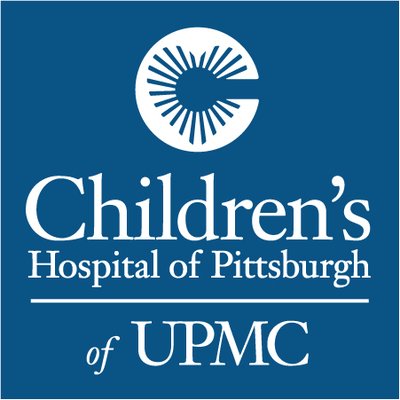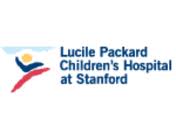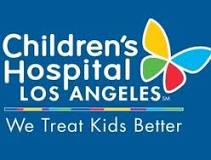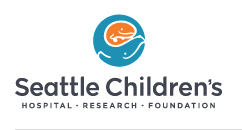Vorinostat Combined With Isotretinoin and Chemotherapy in Treating Younger Patients With Embryonal Tumors of the Central Nervous System
| Status: | Active, not recruiting |
|---|---|
| Conditions: | Cancer, Brain Cancer |
| Therapuetic Areas: | Oncology |
| Healthy: | No |
| Age Range: | Any |
| Updated: | 3/20/2019 |
| Start Date: | February 25, 2009 |
A Feasibility Study of Vorinostat (SAHA) Combined With Isotretinoin and Chemotherapy in Infants With Embryonal Tumors of the Central Nervous System
This pilot clinical trial studies the side effects and the best way to give vorinostat with
isotretinoin and combination chemotherapy and to see how well they work in treating younger
patients with embryonal tumors of the central nervous system. Vorinostat may stop the growth
of tumor cells by blocking some of the enzymes needed for cell growth. Drugs used in
chemotherapy, such as isotretinoin, vincristine sulfate, cisplatin, cyclophosphamide, and
etoposide phosphate, work in different ways to stop the growth of tumor cells, either by
killing the cells, by stopping them from dividing, or by stopping them from spreading. Giving
vorinostat with isotretinoin and combination chemotherapy may be an effective treatment for
embryonal tumors of the central nervous system. A peripheral blood stem cell transplant may
be able to replace blood-forming cells that were destroyed by chemotherapy. This may allow
more chemotherapy to be given so that more tumor cells are killed.
isotretinoin and combination chemotherapy and to see how well they work in treating younger
patients with embryonal tumors of the central nervous system. Vorinostat may stop the growth
of tumor cells by blocking some of the enzymes needed for cell growth. Drugs used in
chemotherapy, such as isotretinoin, vincristine sulfate, cisplatin, cyclophosphamide, and
etoposide phosphate, work in different ways to stop the growth of tumor cells, either by
killing the cells, by stopping them from dividing, or by stopping them from spreading. Giving
vorinostat with isotretinoin and combination chemotherapy may be an effective treatment for
embryonal tumors of the central nervous system. A peripheral blood stem cell transplant may
be able to replace blood-forming cells that were destroyed by chemotherapy. This may allow
more chemotherapy to be given so that more tumor cells are killed.
PRIMARY OBJECTIVES:
I. To investigate the feasibility of administering vorinostat (SAHA) and isotretinoin for
three days prior and concomitant with cisplatin based chemotherapy over three courses of
induction chemotherapy.
II. To describe the toxicity of administering vorinostat (SAHA) and isotretinoin for three
days prior and concomitant with cisplatin based chemotherapy over three courses of induction
chemotherapy.
III. To investigate prognostic values of histopathological classification and biological
markers in the context of a feasibility study.
SECONDARY OBJECTIVES:
I. To estimate the preliminary response rate of this approach in patients with measurable
residual disease (primary site and/or metastatic sites).
II. To estimate disease specific progression-free and overall survival, in the context of a
feasibility study.
III. To explore the predictive values of biological markers in cerebrospinal fluid (CSF),
plasma, urine tumor material in the context of a feasibility study.
OUTLINE:
INDUCTION THERAPY: Patients receive vorinostat orally (PO) once daily (QD) and isotretinoin
PO twice daily (BID) on days 1-4; vincristine sulfate intravenously (IV) on days 4, 11, and
18; cisplatin IV over 6 hours on day 4; cyclophosphamide IV over 1 hour on days 5-6; and
etoposide phosphate IV over 1 hour on days 4-6. Treatment repeats every 21 days for 3 cycles
in the absence of disease progression or unacceptable toxicity. Patients also undergo
peripheral blood stem cell (PBSC) harvesting after each course.
CONSOLIDATION THERAPY: Within 6 weeks (10 weeks if patient is re-staged) after completion of
induction therapy, patients receive carboplatin IV over 2 hours and thiotepa IV over 2 hours
on days 1-2. Patients also receive autologous PBSC rescue infusion over 6 hours on day 4.
Treatment repeats every 28 days for 3 cycles in the absence of disease progression or
unacceptable toxicity. Beginning 3 weeks later, patients with M0 non-desmoplastic
medulloblastoma also undergo conformal radiotherapy* to the tumor bed.
NOTE: *Patients with supratentorial primary tumors or metastatic disease undergo radiotherapy
at the discretion of treating physician.
MAINTENANCE THERAPY: Beginning 4 weeks after completion of radiotherapy or immediately after
completion of consolidation therapy, patients receive vorinostat PO QD on days 1, 3, 5, 6, 8,
10, 12, and 13 and isotretinoin PO BID on days 1-14. Treatment repeats every 28 days for up
to 12 cycles in the absence of disease progression or unacceptable toxicity.
After completion of study treatment, patients are followed up every 3 months for 2 years and
then every 6 months for 3 years.
I. To investigate the feasibility of administering vorinostat (SAHA) and isotretinoin for
three days prior and concomitant with cisplatin based chemotherapy over three courses of
induction chemotherapy.
II. To describe the toxicity of administering vorinostat (SAHA) and isotretinoin for three
days prior and concomitant with cisplatin based chemotherapy over three courses of induction
chemotherapy.
III. To investigate prognostic values of histopathological classification and biological
markers in the context of a feasibility study.
SECONDARY OBJECTIVES:
I. To estimate the preliminary response rate of this approach in patients with measurable
residual disease (primary site and/or metastatic sites).
II. To estimate disease specific progression-free and overall survival, in the context of a
feasibility study.
III. To explore the predictive values of biological markers in cerebrospinal fluid (CSF),
plasma, urine tumor material in the context of a feasibility study.
OUTLINE:
INDUCTION THERAPY: Patients receive vorinostat orally (PO) once daily (QD) and isotretinoin
PO twice daily (BID) on days 1-4; vincristine sulfate intravenously (IV) on days 4, 11, and
18; cisplatin IV over 6 hours on day 4; cyclophosphamide IV over 1 hour on days 5-6; and
etoposide phosphate IV over 1 hour on days 4-6. Treatment repeats every 21 days for 3 cycles
in the absence of disease progression or unacceptable toxicity. Patients also undergo
peripheral blood stem cell (PBSC) harvesting after each course.
CONSOLIDATION THERAPY: Within 6 weeks (10 weeks if patient is re-staged) after completion of
induction therapy, patients receive carboplatin IV over 2 hours and thiotepa IV over 2 hours
on days 1-2. Patients also receive autologous PBSC rescue infusion over 6 hours on day 4.
Treatment repeats every 28 days for 3 cycles in the absence of disease progression or
unacceptable toxicity. Beginning 3 weeks later, patients with M0 non-desmoplastic
medulloblastoma also undergo conformal radiotherapy* to the tumor bed.
NOTE: *Patients with supratentorial primary tumors or metastatic disease undergo radiotherapy
at the discretion of treating physician.
MAINTENANCE THERAPY: Beginning 4 weeks after completion of radiotherapy or immediately after
completion of consolidation therapy, patients receive vorinostat PO QD on days 1, 3, 5, 6, 8,
10, 12, and 13 and isotretinoin PO BID on days 1-14. Treatment repeats every 28 days for up
to 12 cycles in the absence of disease progression or unacceptable toxicity.
After completion of study treatment, patients are followed up every 3 months for 2 years and
then every 6 months for 3 years.
Inclusion Criteria:
- Patients must have a histologically confirmed, newly-diagnosed medulloblastoma (except
for patients with the histology of localized (M0) desmoplastic medulloblastoma or
atypical teratoid/rhabdoid tumor [ATRT]) or supratentorial primitive neuroectodermal
tumor (PNET) including pineoblastomas
- Patients must have not received any prior therapy other than surgery and/or steroids
- Patient must have adequate pre-trial formalin-fixed, paraffin-embedded (FFPE) tumor
material available for use in the biology studies and central pathology review; if
snap frozen tissue is not available, the study chair must be contacted to discuss
eligibility
- Patient must be a suitable candidate, by institutional standards for stem cell
apheresis
- Lansky performance score (LPS for =< 16 years of age) >= 30 assessed within two weeks
prior to registration
- Absolute neutrophil count (ANC) >= 1000/ul (unsupported) (within 14 days of
registration and within 7 days of the start of treatment)
- Platelets >= 100,000/ul (unsupported) (within 14 days of registration and within 7
days of the start of treatment)
- Hemoglobin >= 8 g/dL (may be supported) (within 14 days of registration and within 7
days of the start of treatment)
- Bilirubin < 1.5 times upper limit of normal for age (within 14 days of registration
and within 7 days of the start of treatment)
- Serum glutamate pyruvate transaminase (SGPT) (alanine aminotransferase [ALT]) =< 1.5
times institutional upper limit of normal for age (within 14 days of registration and
within 7 days of the start of treatment)
- Serum creatinine =< 1.5 times upper limit of institutional normal for age or
glomerular filtration rate (GFR) >= 70 ml/min/1.73 m^2 or estimated GFR (Schwartz
bedside) that is > 99 ml/min/1.73 m^2 (within 14 days of registration and within 7
days of the start of treatment)
- Parents/legal guardians must have the ability to understand and the willingness to
sign a written informed consent document according to institutional guidelines
Exclusion Criteria:
- Patients with diagnosis of atypical teratoid/rhabdoid tumor (ATRT by histology,
immunohistochemistry and/or molecular analysis) and desmoplastic M0 medulloblastoma
will be excluded from the study
- Patients with any clinically significant unrelated systemic illness (serious
infections or significant cardiac, pulmonary, hepatic or other organ dysfunction),
that would compromise the patient's ability to tolerate protocol therapy or would
interfere with the study procedures or results
- Patients receiving any other anticancer or investigational drug therapy are excluded
- Patients having taken valproic acid within 2 weeks prior to initiation of treatment
are excluded
- Patients with inability to return for follow-up visits or obtain follow-up studies
required to assess toxicity to therapy
- Patients with a parabens allergy
We found this trial at
15
sites
111 Michigan Ave NW
Washington, District of Columbia
Washington, District of Columbia
(202) 476-5000

Childrens National Medical Center As the nation’s children’s hospital, the mission of Children’s National Medical...
Click here to add this to my saved trials
3333 Burnet Avenue # Mlc3008
Cincinnati, Ohio 45229
Cincinnati, Ohio 45229
1-513-636-4200

Cincinnati Children's Hospital Medical Center Patients and families from across the region and around the...
Click here to add this to my saved trials
Childrens Hospital Los Angeles Children's Hospital Los Angeles is a 501(c)(3) nonprofit hospital for pediatric...
Click here to add this to my saved trials
St. Jude Children's Research Hospital St. Jude is unlike any other pediatric treatment and research...
Click here to add this to my saved trials
Children's Hospital of Philadelphia Since its start in 1855 as the nation's first hospital devoted...
Click here to add this to my saved trials
4401 Penn Avenue
Pittsburgh, Pennsylvania 15224
Pittsburgh, Pennsylvania 15224
412-692-5325

Children's Hospital of Pittsburgh of UPMC UPMC is one of the leading nonprofit health systems...
Click here to add this to my saved trials
Click here to add this to my saved trials
Click here to add this to my saved trials
Duke Univ Med Ctr As a world-class academic and health care system, Duke Medicine strives...
Click here to add this to my saved trials
Texas Children's Hospital Texas Children's Hospital, located in Houston, Texas, is a not-for-profit organization whose...
Click here to add this to my saved trials
Click here to add this to my saved trials
Click here to add this to my saved trials
Memorial Sloan Kettering Cancer Center Memorial Sloan Kettering Cancer Center — the world's oldest and...
Click here to add this to my saved trials
725 Welch Rd
Palo Alto, California 94304
Palo Alto, California 94304
(650) 497-8000

Lucile Packard Children's Hospital Stanford University Stanford Children's Health is the only network in the...
Click here to add this to my saved trials
Seattle Children's Hospital Seattle Children’s Hospital specializes in meeting the unique physical, emotional and developmental...
Click here to add this to my saved trials






